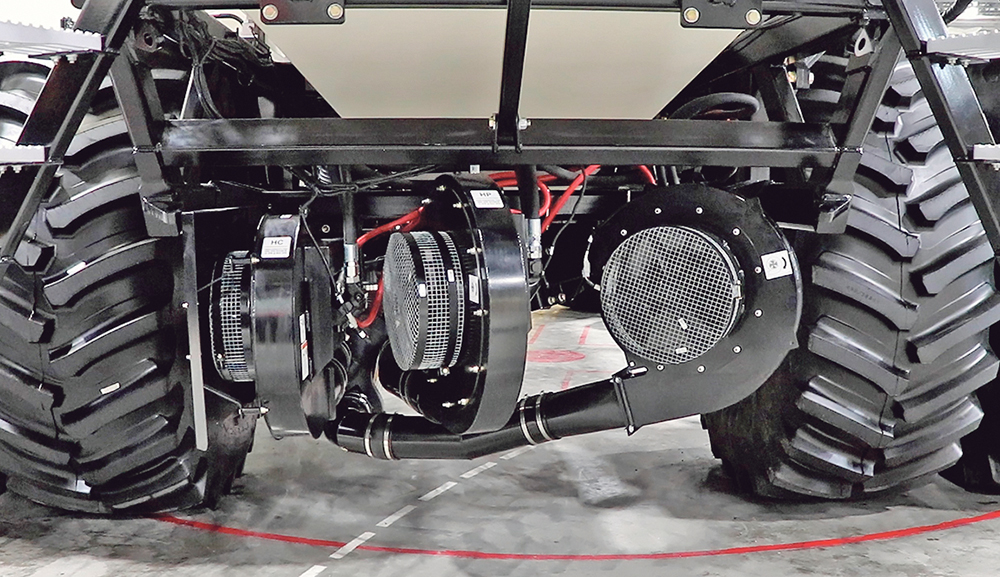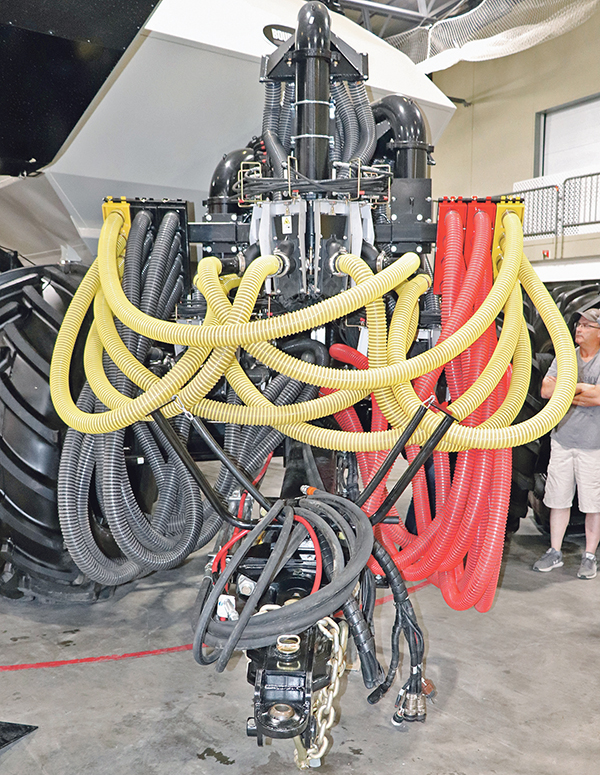Sask. machinery maker puts a fully variable rate air seeder with three product placements into reduced tillage package
REGINA — Growers can now purchase an air seeder with three separate airstreams that push product to three different locations in each crop row with the launch of Bourgault’s TriMax system.
“The TriMax system is a combination of an air tank with three fans, or three separate air streams, hooked to a drill that actually has three different openers,” Jeff Strukoff of Bourgault Industries said during Canada’s Farm Show in Regina.
“The big thing with this is it’s a single pass, triple product opportunity.”
Read Also

Huge Black Sea flax crop to provide stiff competition
Russia and Kazakhstan harvested huge flax crops and will be providing stiff competition in China and the EU.
The TriMax triple-shoot system is available as an option on Bourgault’s 9000 series air carts, and with Bourgault’s 3330SE and 3335QDA ParaLink hoe drills.
Strukoff said Bourgault’s TriMax system was designed for growers who need a lot of flexibility when it comes to placement of fertilizer and seed.
“There are five tanks on the systems. So, there’s a lot of flexibility on where you put different products. It basically blends your fertilizer on the go and delivers it to the ground exactly the way you want,” he said.
“You don’t necessarily have to put any fertilizer in the seed row because you have that option of putting immobile nutrients in the side band and taking toxic fertilizer like nitrogen further away from the seed.”

A five-year study conducted at the Bourgault test farm in St. Brieux, Sask., found canola mortality is lowest when there is no fertilizer in the seed row.
“You can still put phosphate and potash in close proximity to the seed, and your nitrogen further away. The plants seem to access the phosphate very quickly and get the pop-up effect, but there’s virtually zero influence from fertilizer increasing mortality,” Strukoff said.
He said with many drills, largely because of fertilizer placement in the seed row, canola mortality between 40 and 50 percent is common.
This is especially a problem when producers want to apply high rates of fertilizer.

This year at the test farm, Strukoff said staff factored in a 10 percent mortality factory when using the TriMax.
“We hit our target plant counts this year. We were shooting for five plants per sq. foot and then we ended up with 4.7 to 5.2,” he said.
The ParaLink hoe drills also provide a great deal of flexibility when it comes to seed and fertilizer placement.
Operators can vary the depth and distance of the seed and fertilizer knife with reference to each other.
“You can pick the configuration. Whether you want to run both knives in the same plane, or if you want to increase separation by moving it to the side and further down, you can do that too.”
The seeding tubes on the ParaLink hoe drills are fixed mounted to the opener, but operators can remove one bolt and drop one of the knives.
“So, you can actually convert it back to the single-knife seeding system if you run into trash management issues, or for whatever reason you need to go to a single line,” Strukoff said.
The coulter banders can also be quickly locked in the upward position if needed.


















